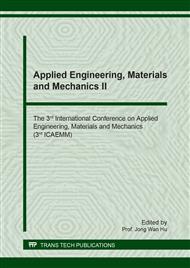p.128
p.133
p.138
p.145
p.152
p.157
p.162
p.171
p.179
Research on a New Metal-N-Poly Thermoelectric Material Sensor for Vacuum Sensing with Self Heating
Abstract:
This paper proposes a new vacuum sensor with CMOS Metal-N-Poly thermoelectric materials which works for both thermoelectric sensing and resistive heating. A new method of vacuum measurement with self-heating is proposed based on the dual phases of heating and sensing for the same element which is realized with CMOS thermoelectric sensor. Using the TSMC 0.35 μm CMOS-MEMS process, the proposed thermoelectric sensor is designed and fabricated with standard CMOS materials of the 4th metal and N-polysilicon to form 64 pairs of central-symmetrical thermocouples. There is an air convection-sensing area at the center of membrane and is filled with array of micro-through-holes to enhance the effect of heat convection. When the air molecules move through the array of hole, the heat exchange will take away the heat to cause a temperature drop of sensing area which gives a weak voltage between the cold and hot end of the thermocouples. The heating of thermopile itself is designed at the first phase and sensing the output voltage at the second phase subsequently. According to a careful investigation of the measurement with a wide range of 10m~10k torr, our proposed sensing scheme based on a thermoelectric type sensor is proved for practical vacuum detection and most of all it is proved as a new approach to use a commercial thermopile without heater, which is easier to include than a special custom design.
Info:
Periodical:
Pages:
152-156
Citation:
Online since:
July 2018
Authors:
Keywords:
Price:
Сopyright:
© 2018 Trans Tech Publications Ltd. All Rights Reserved
Share:
Citation:


